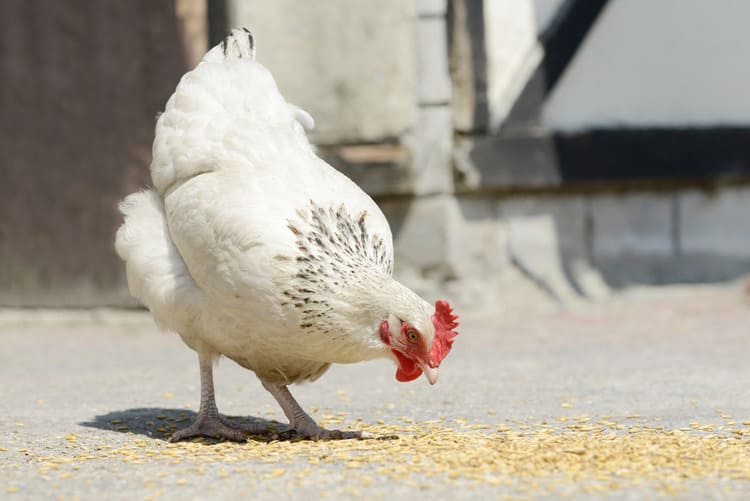Vitamin E (Vit E) is included at high doses in commercial broiler feeds to boost performance because of its antioxidant function. Phytogenic feed additives with antioxidant properties might be used to spare or replace Vit E as antioxidant and reduce costs. Previous studies with an encapsulated product based on spices extracts (capsicum, black pepper, and ginger; SPICY) and others with olive pomace extract (OE), with certain antioxidant properties, have shown positive effects on broiler performance. The present study aims to test the potential use of SPICY and OE to spare Vit E in broiler feeds by comparing its incorporation at basal levels of Vit E to a diet with 100 ppm of added Vit E. To this end 640 Cobb 500 male broilers were randomly distributed among five experimental treatments (8 pens/treatment), a basal diet with no additives and no added Vit E in the premix as negative control (NC) and, four experimental diets obtained by adding different products on top of the basal diet: 100 ppm of Vit E (positive control, PC), 250 ppm of SPICY, 1.250 ppm of OE, or a combination of both products 250 ppm SPICY + 1.250 ppm OE (SPIOE). All products were supplied by Lucta, S.A., Madrid, Spain. The basal diet contained corn and soybean meal as main raw materials providing 10 ppm of Vit E. The experimental diets were fed ad libitum from 1 to 35 days of age. Body weight (BW) and feed consumption were determined by pen at 7, 14, 21, 28 and 35 d of age. A non-linear Gompertz model was used to analyze growth performance. Experimental diets significantly affected BW at the inflection point (P < 0.05) with animals fed PC, SPICY and SPIOE diets showing higher values than the NC and the OE fed birds. According to this model animals fed the NC and OE diets can reach 3 kg of BW in 39.1 and 38.8 days of age respectively while those fed the PC, SPICY and SPIOE would need 37.7, 38.1 and 38.2 days respectively. No significant differences among experimental diets were observed on feed intake. Animals fed the PC diet showed significantly (P < 0.05) better feed conversion ratio for the global period than birds fed OE, 1.27 and. 1.32 respectively. It is concluded that, under our experimental conditions, a corn-soybean meal diet providing 10 ppm of basal Vit E, supplemented with 250 ppm SPICY or 250 ppm SPICY + 1.250 ppm OE, results in better growth performance than the basal diet alone and similar to a diet supplemented with 100 ppm of Vit E.

Autores: F. Sevillano, M. Blanch, M. A. Ibañez, D. Menoyo
Libro/Revista: 23rd European Symposium on Poultry Nutrition (Rimini, Italy)
